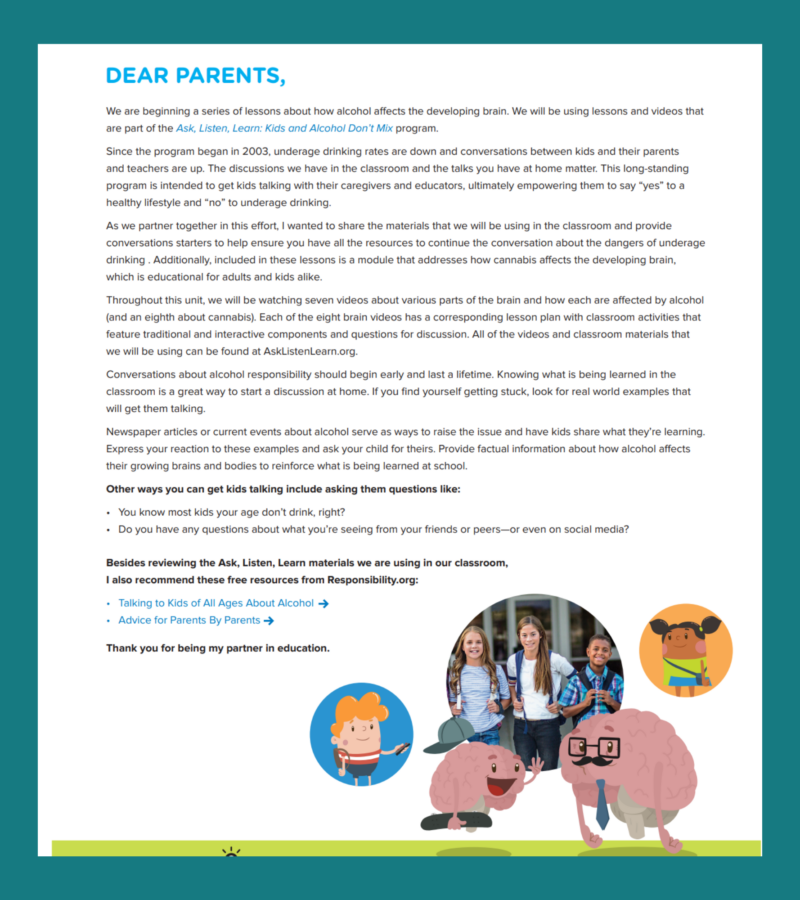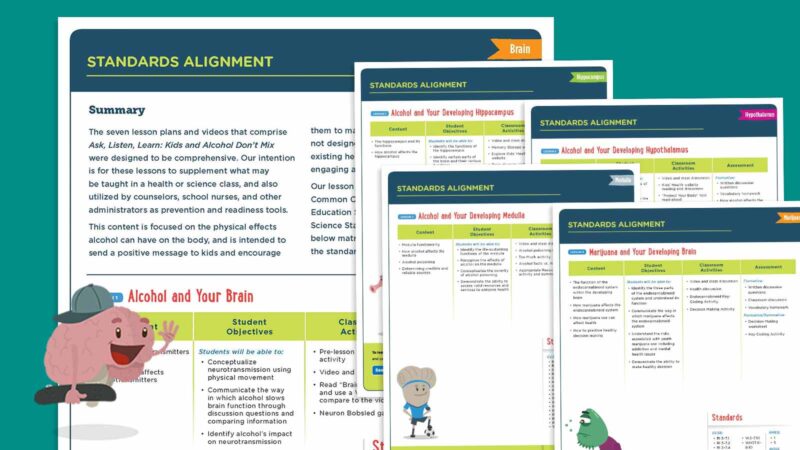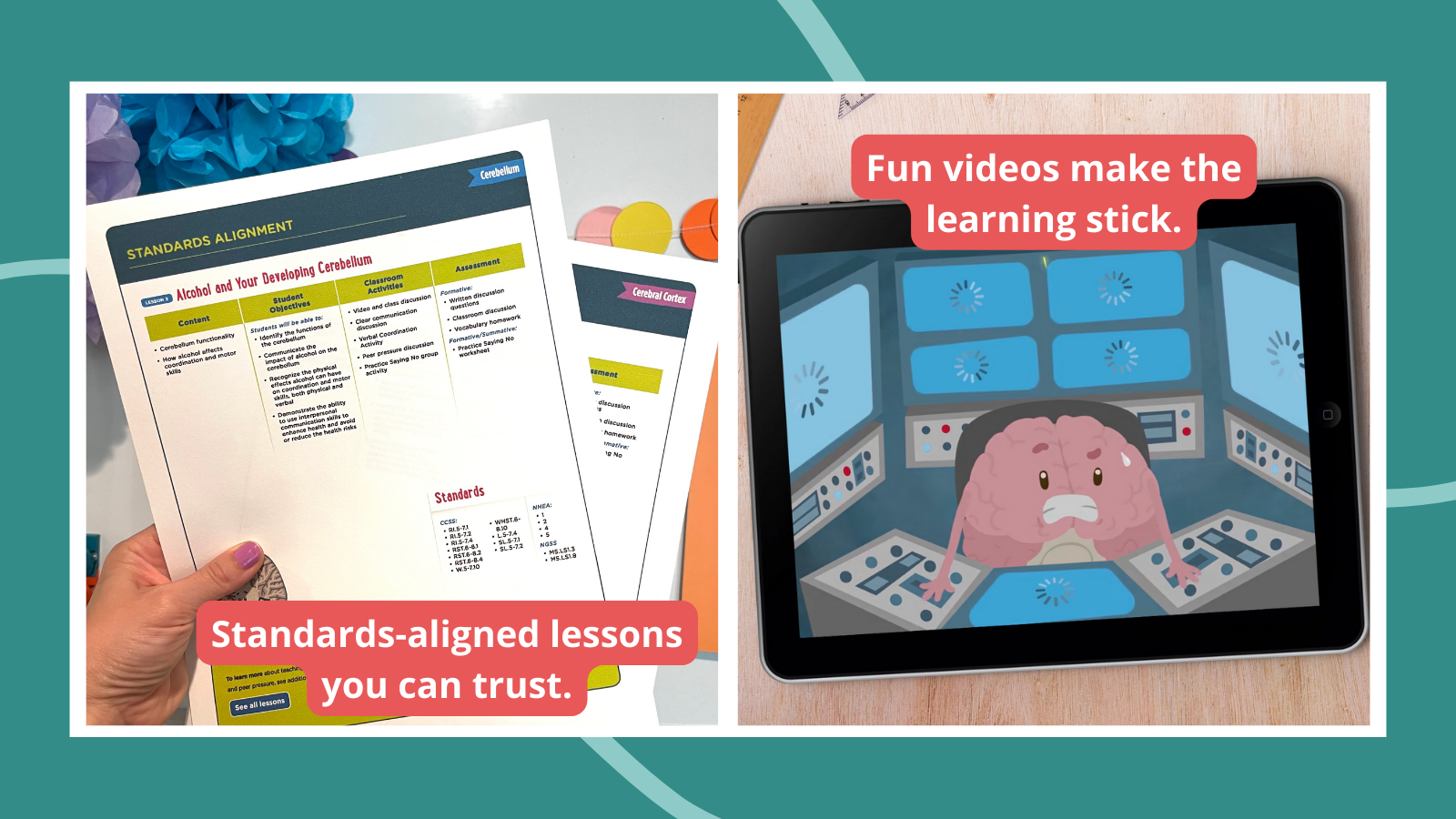While parents are the #1 influence on our students’ decision to drink or not drink, we as teachers also have a vital role to play. By providing students with the best possible information, we can empower them to make the right choices for their developing brains and bodies. Encouraging words from a teacher can also help students stand up for themselves and be positive leaders for their peers.
Ask, Listen, Learn is a resource that teaches students the science behind how alcohol affects their developing brains and bodies to keep them substance-free. Let’s take a closer look at five unique aspects of this program that make it an outstanding free classroom resource.
1. The focus is on empowering healthy decision-making, not using scare tactics.
In the past, lessons on prevention education often began with frightening statistics or lectures. Ask, Listen, Learn starts with science. The program provides students with science-based information on how alcohol affects the developing brain and how that impacts them. By giving them the tools to make good decisions, students are far more likely to say “YES” to a healthy lifestyle and “NO” to underage drinking.
2. Ask, Listen, Learn helps get everyone involved in the conversation.

The most meaningful learning takes place when caregivers, students, and teachers work together toward a common goal. Ask, Listen, Learn encourages such collaboration by providing parent resources that complement classroom instruction. Letters home explaining the Ask, Listen, Learn program and mission are available in English, Spanish, Mandarin, and Tagalog. Materials you can send home also encourage conversations that extend the lessons discussed in the classroom such as icebreakers for conversation starting and role playing ways to say no. This program helps teachers involve parents and guardians as partners in their child’s education, which is important because, according to a survey conducted by Responsibility.org, 91% of kids have talked with their parents or another caregiver about the dangers of drinking alcohol.
3. The lessons are engaging and unique.
Many students are used to adults telling them they shouldn’t drink, but it’s important for kids to understand the “WHY” behind the “NO.” Through engaging videos, lessons, and activities, students learn how alcohol affects each part of their brains and what that does to their developing bodies. Armed with this information, students are able to make informed choices that lead to better decisions.
4. Risky behaviors run together—it is not too soon to discuss underage cannabis use.
It’s not too soon to have discussions about the dangers of underage cannabis use with your upper-elementary students. Not only is it illegal for everyone under 21, but underage cannabis use also negatively affects young peoples’ developing brains and bodies. Ask, Listen, Learn’s video, lesson plan, and activities teach students how cannabis affects the developing brain in an age-appropriate way. This lesson also comes with an educator primer and a parent letter.
5. The resources are standards-aligned and evidence-based.

We want to make sure we’re sharing the best possible information with our students. Ask, Listen, Learn‘s lessons are evidence-based and have been reviewed by the National Institute on Alcohol Abuse and Alcoholism (NIAAA). Additionally, each lesson is standards-aligned so they can easily be integrated in your classroom. A Standards Alignment guide is available with every lesson, and each one shows the Common Core State Standards (CCSS), the National Health Education Standards (NHES), and the Next Generation Science Standards (NGSS) met by the lesson.
Here’s proof that prevention education efforts work:
- Since 2003, conversations among parents and kids have increased 31%.
- 93% of parents have talked to their kids at least once in the past year about alcohol consumption.
- Not only are parents doing a great job, so are kids! In fact, 91% of kids have talked with their parents or another caregiver about the dangers of drinking alcohol.
- During the past 20 years, the rate of past-month consumption among underage youth has decreased 53%.

